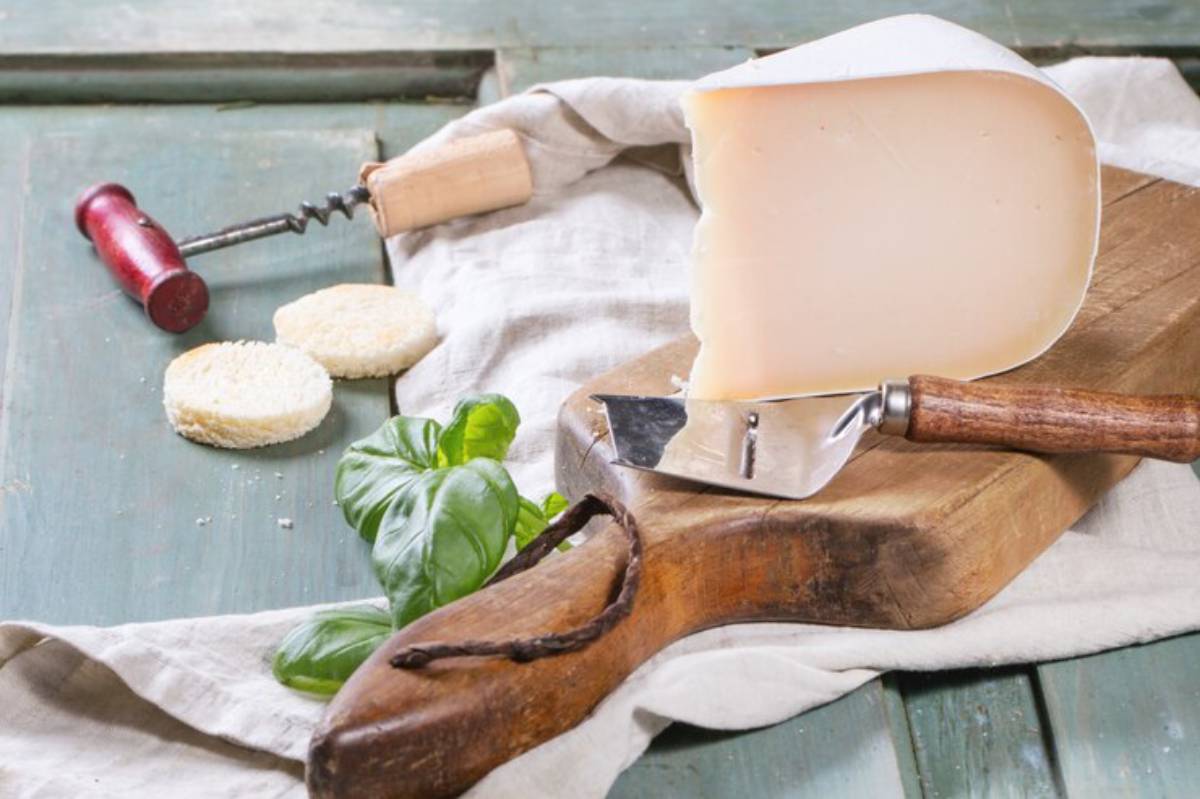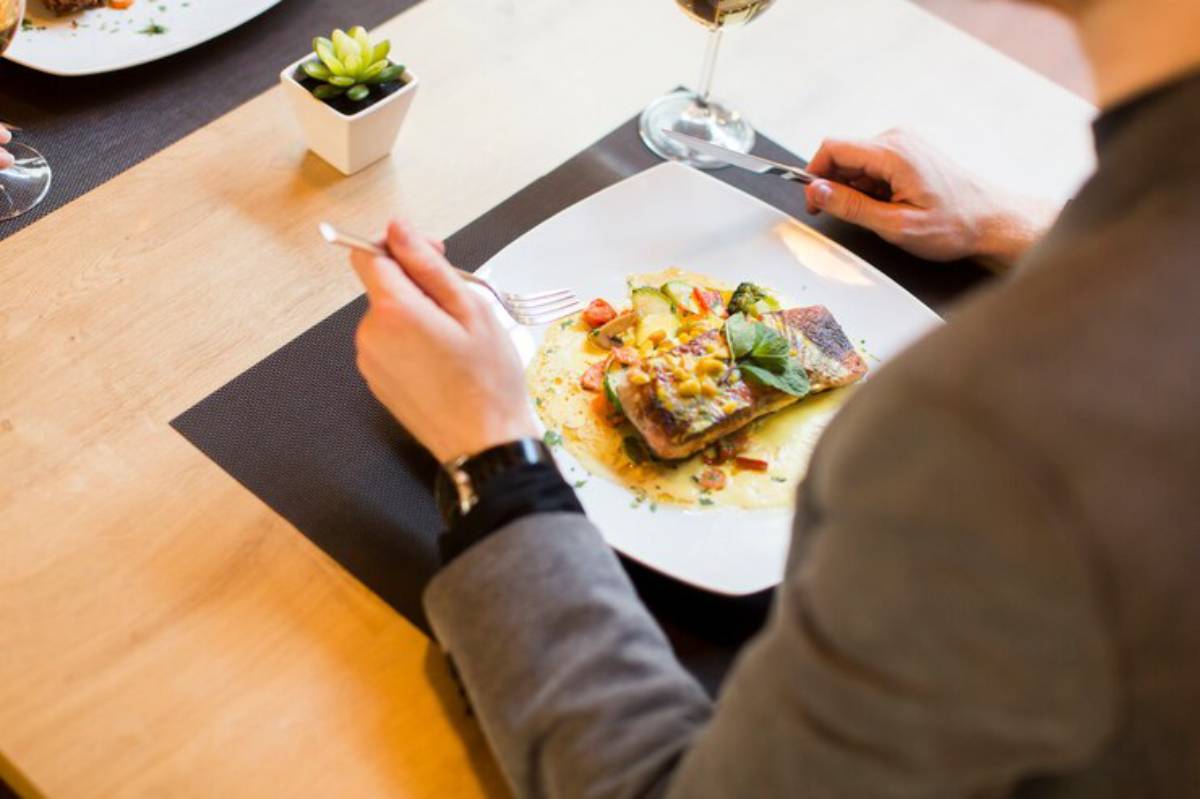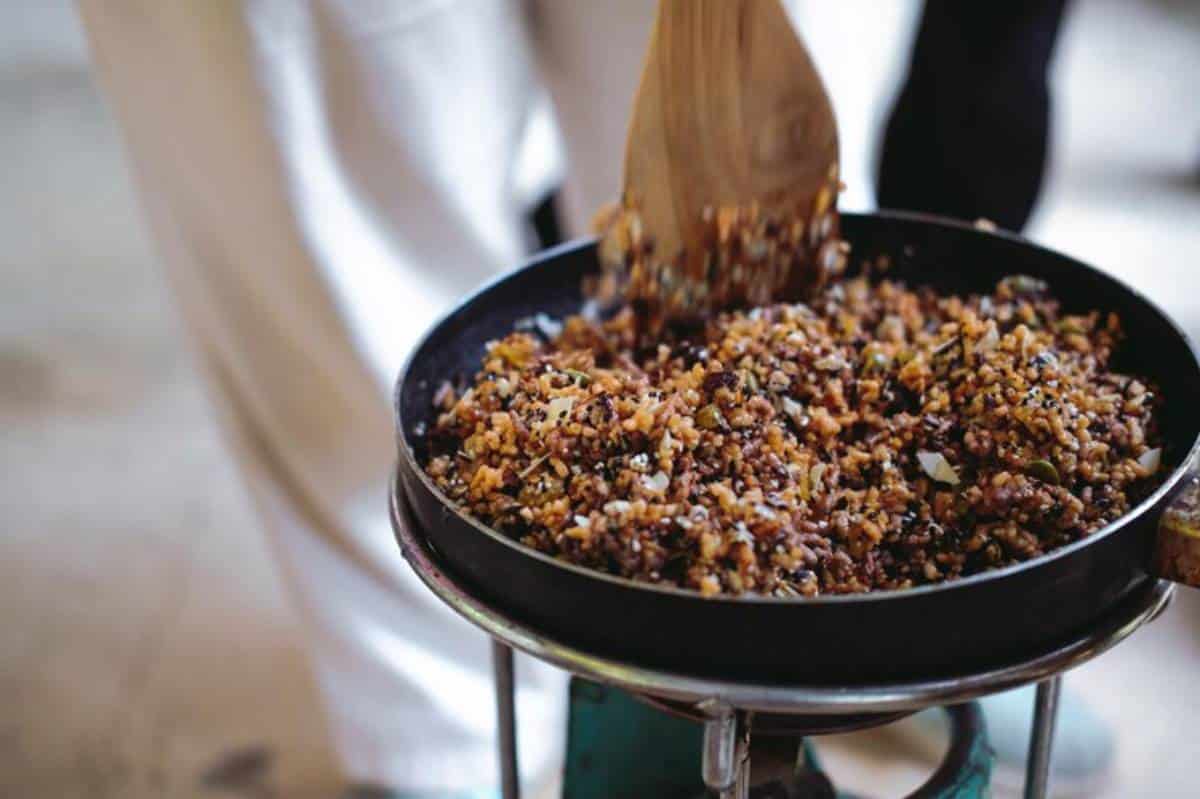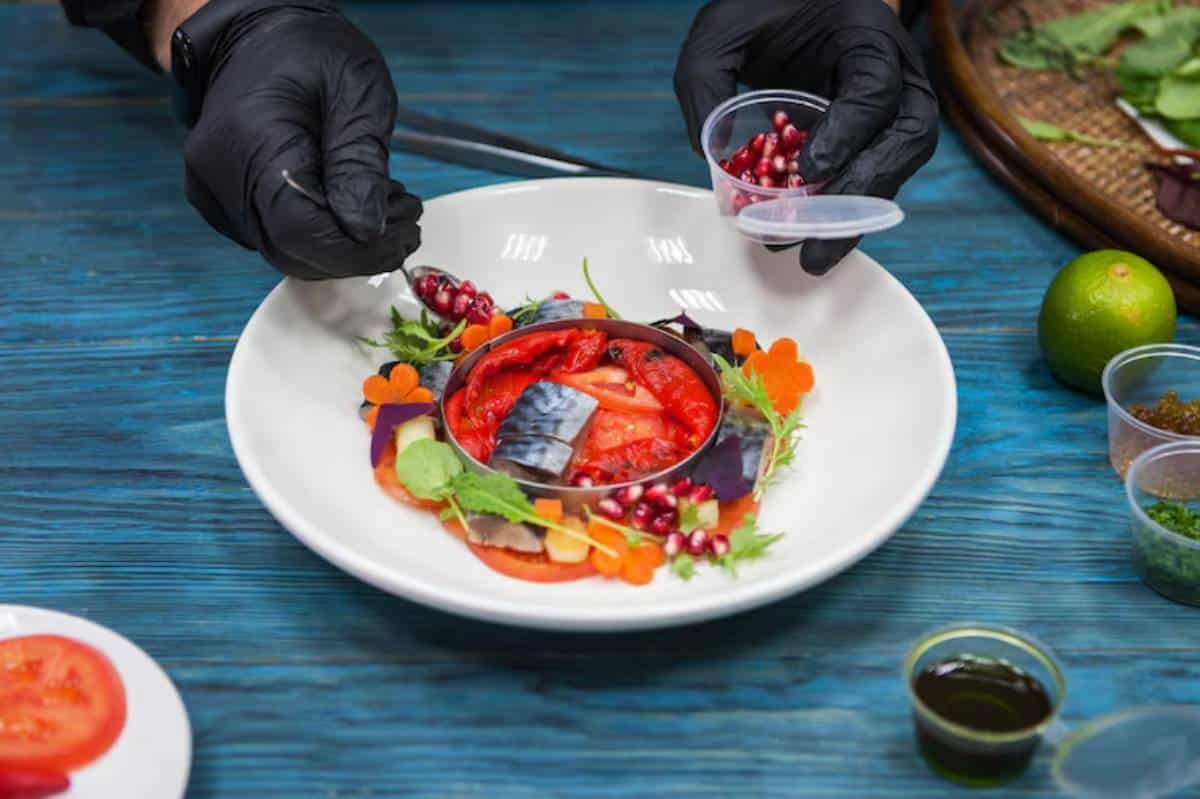
Plating Like a Pro: Elevate Home Dishes
There’s a quiet thrill in placing a beautifully arranged plate of food on the table — the kind that makes someone pause before taking the first bite. That little moment of admiration? That’s the power of presentation. And you don’t need a fine-dining kitchen to experience it.
Plating is where creativity meets precision, and where a humble home-cooked dish becomes something restaurant-worthy. Whether you’re preparing a meal for guests, creating an intimate dinner for two, or simply making Tuesday night dinner feel special, learning to plate like a chef transforms the experience — both for you and for those lucky enough to share your table.
This gourmet plating guide breaks down the art of modern food presentation into approachable techniques and smart strategies. You’ll discover how to balance colour, texture, height, and negative space, all while tapping into your personal style. From everyday meals to celebratory spreads, plating is your invitation to turn ordinary into elevated. Let’s dig into the details.
Why Plating Matters More Than You Think
The first bite is visual
Our eyes eat first. Studies in food psychology show that presentation influences our perception of taste, even when the ingredients are identical. A thoughtfully plated dish feels more intentional, refined, and enjoyable.
- Visual appeal heightens anticipation
- Contrast and symmetry improve perceived flavour
- Clean presentation reflects care and quality
In short, plating isn’t just for show — it affects how your food is experienced.
You don’t need restaurant tools or skills
Plating at home doesn’t require tweezers or foam canisters. It starts with intention, attention, and a few foundational principles. Once you grasp those, the rest becomes a matter of play and practice.
The Anatomy of a Well-Plated Dish
Start with the plate
Before you even think about sauces or garnishes.
Ask yourself:
- What shape and size fits the meal best?
- Is the plate colour helping or hindering the food?
White plates are classics for a reason — they let colours pop. Dark or matte finishes can add moodiness, while round, square, or even asymmetrical plates offer different framing effects.
Visual balance
Your plate is a canvas, and balance is key. Distribute components so that the dish feels harmonious — not crowded, not sparse.
- Avoid overloading one side
- Keep space between elements
- Use odd numbers for grouping (e.g., three scallops, not four)
Negative space — the empty space around your food — draws the eye in and adds sophistication. It’s a core concept in modern food presentation, especially when working with minimal or deconstructed styles.
Building Height, Layers, and Texture
Don’t go flat
Height creates dimension and elegance.
You can achieve it by:
- Nesting proteins on a bed of grains or mash
- Leaning roasted veg against one another
- Layering elements in staggered heights
Think of it like styling a photo or a floral arrangement — varied layers make the visual more dynamic.
Play with texture
Combining creamy, crispy, soft, and crunchy creates excitement on the palate — and the plate. Contrast smooth sauces with charred edges, crispy toppings with tender centres. It’s the interplay that keeps every bite interesting.
If you’re looking to elevate the main element of your dish, consider applying precision techniques like sous vide to ensure perfect texture. Our guide on perfect sous vide steak at home offers a brilliant base for beautifully plated proteins.
Using Colour and Contrast with Intent
Let ingredients shine
Bright vegetables, golden crusts, vibrant sauces — all these naturally add colour.
Use them strategically:
- Green veg against white starches
- Beetroot or carrot purée for contrast
- Herbs and edible flowers as fresh accents
Avoid a monochrome plate unless that’s the look you’re going for. And when you do want one tone, be sure to add variety through shape and texture instead.
Don’t forget the sauce
A swoosh of sauce can anchor the dish and unify elements. Think smooth, not splattered. Use the back of a spoon to swipe, a squeeze bottle to dot, or a ladle to pool. Less is more — let the sauce enhance, not drown.
The Power of Garnish: Finishing Like a Chef

Micro herbs, oils, and flakes
A finishing flourish isn’t about adding random leaves — it’s about choosing something that enhances flavour and completes the aesthetic.
Use:
- Microgreens: Small, neat, and flavourful
- Crispy shallots or breadcrumbs: Add crunch and depth
- Infused oils: A tiny drizzle can go a long way
- Flaky salt: For shine and bite
A well-chosen garnish pulls the dish together, both in taste and appearance.
Real-World Scenario: Plating for a Dinner Party
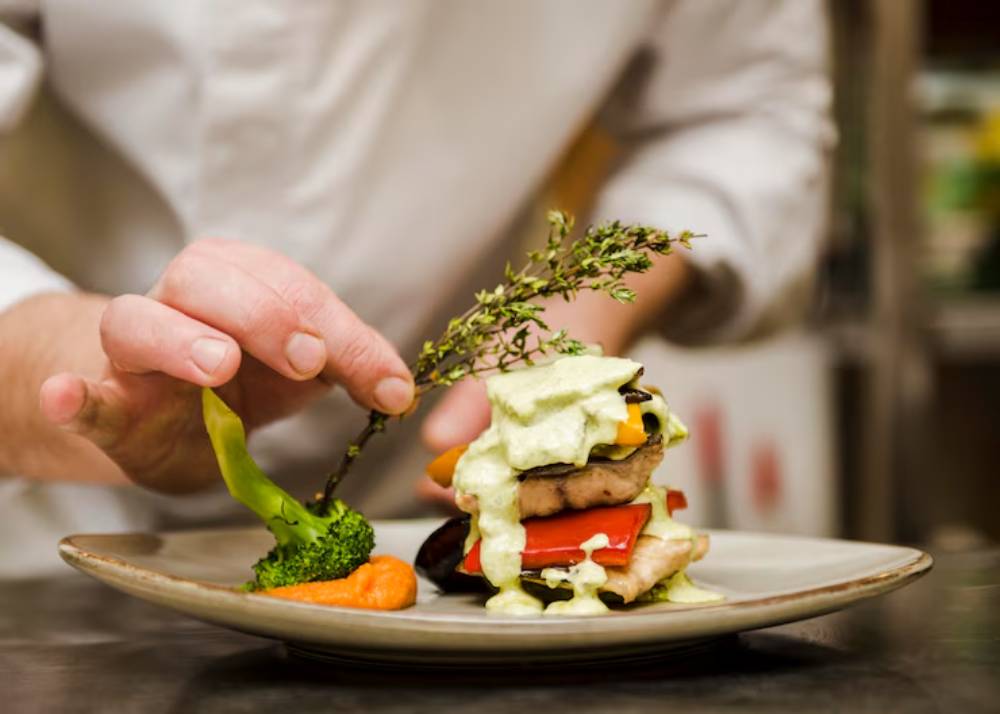
Imagine you’ve slow-cooked duck breast to medium-rare perfection.
Instead of piling it beside some veg and calling it done, you:
- Slice the duck and fan it across a swipe of orange glaze
- Stack roasted parsnip rounds vertically at one corner
- Scatter microgreens for colour
- Add a final spoonful of pomegranate seeds for pop
Now, the plate tells a story. It feels special, not because the ingredients changed, but because the presentation did.
For another striking way to elevate such dishes, pairing flavours through sauces or infused fats is a great move. The use of compound butters adds layers of richness and colour to any composed plate.
Tools That Help (But Aren’t Required)
Everyday items that double as plating tools
- Spoons: For sauces, swooshes, quenelles
- Tongs: To place delicate elements precisely
- Offset spatula: Great for neat placements
- Ring moulds: Stack grains, pulses, or salads cleanly
- Paintbrush (clean): For streaking sauces or oils
You don’t need to buy professional plating kits. Start with what’s already in your kitchen and let the techniques do the heavy lifting.
Common Plating Mistakes and How to Fix Them
Mistake 1: Overcrowding
Cramming too much onto the plate makes everything blur together. Fix it by choosing fewer elements or using a larger plate with more space.
Mistake 2: No focal point
Every plate needs a “hero” — usually the protein or star veg. Arrange supporting items around it, not on top or in competition.
Mistake 3: Lack of cohesion
If elements don’t relate in colour, texture, or theme, the dish feels confused. Stick to a clear flavour profile and visual palette.
Mistake 4: Using garnish with no purpose
Parsley just for the sake of green? Skip it. Let every element contribute something meaningful.
Developing Your Own Plating Style
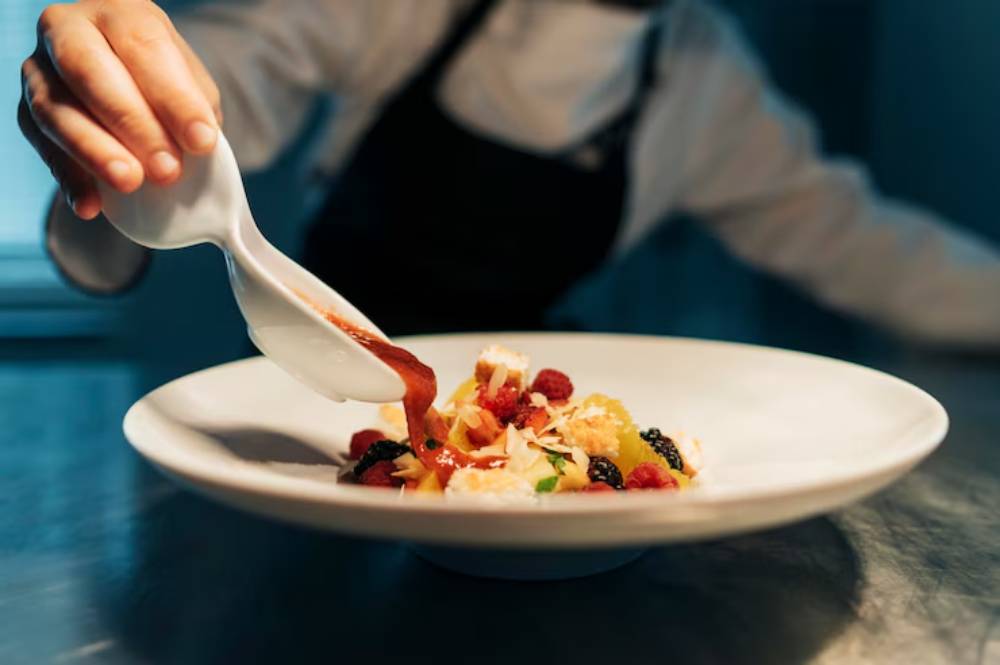
Start with inspiration, not imitation
Follow chefs on Instagram, watch plating reels, and pay attention when dining out. But use these as ideas, not templates.
Ask:
- What plating style suits my cooking?
- Am I more rustic or refined?
- Do I like minimal plates or abundant ones?
Plating should reflect both the dish and your personality. That’s what makes it yours.
Practice and photograph
There’s no better feedback than a photo.
It helps you:
- Spot clutter or imbalance
- Compare options side-by-side
- Track your progress over time
Make plating fun, not rigid. The goal is to enhance your dish, not overthink it.
Conclusion: Plating Isn’t Just for Chefs
When you take the time to plate thoughtfully, you’re not just presenting food — you’re creating an experience. You’re saying this matters. That the flavours deserve attention. That your effort is part of the enjoyment.
Whether it’s a weeknight pasta or a Saturday night dinner party, learning to plate like a chef lets you elevate every dish with intention and confidence. It’s a creative act that invites you to slow down, play with colour and shape, and express yourself through something as nourishing as food.
So next time you reach for the spoon or towel, pause. Think about the canvas. Because with a little care, you’re not just serving dinner — you’re plating like a pro.
